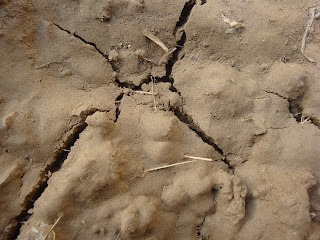 Planted four saplings and that grew in heights, approximately seven foot tall. This is the first time I tried to grow this plant. Once happened to see a few articles on Guar Seeds as generating good revenues which is being used as raw-materials in different industries Please check below site;
Planted four saplings and that grew in heights, approximately seven foot tall. This is the first time I tried to grow this plant. Once happened to see a few articles on Guar Seeds as generating good revenues which is being used as raw-materials in different industries Please check below site;Guar Plantation in North west part of India.
Beans plant looks sombre (may be just to me), but I like the taste of it when you fry it with minimum ingredients like garlic, ginger and a pinch of pepper.
From Article: Guar Gum is an important ingredient in producing food
emulsifier, food additive, food thickener and other guargum products. India is
the largest producer of guar gum products. Its guar gum exporters, guar gum
manufacturers, guar gum products suppliers, food emulsifier exporter have
reached to many countries and today there is a lot of demand for Indian guar
gum products, food additives, food thickener and other allied guar gum products.
Guar gum is often crosslinked with boron or chromium ions to make it more stable and heat-resistant. The crosslinking of guar with metal ions results in a linear gel that does not block the formation and helps efficiently in formation cleaning process. The borate–guar reaction is reversible, and depends on the pH (hydrogen ion concentration) of the solution. Crosslinking of guar with borate occurs at high pH (approximately 9–10) of the solution. Guar gum has also proven a useful substitute for locust bean gum (made from carob seeds).
Reaching Out to Heights
Never expected the plant to grow in heights, so reaching out to pluck out beans.
Never expected the plant to grow in heights, so reaching out to pluck out beans.









































